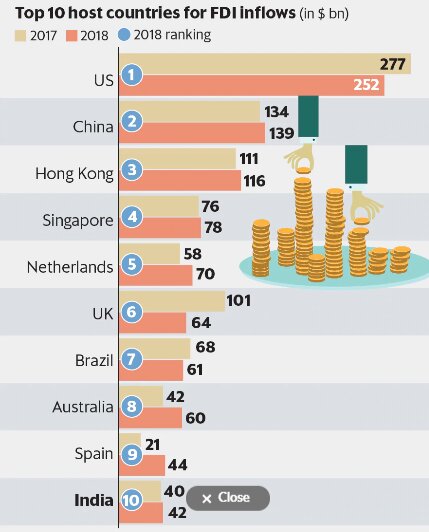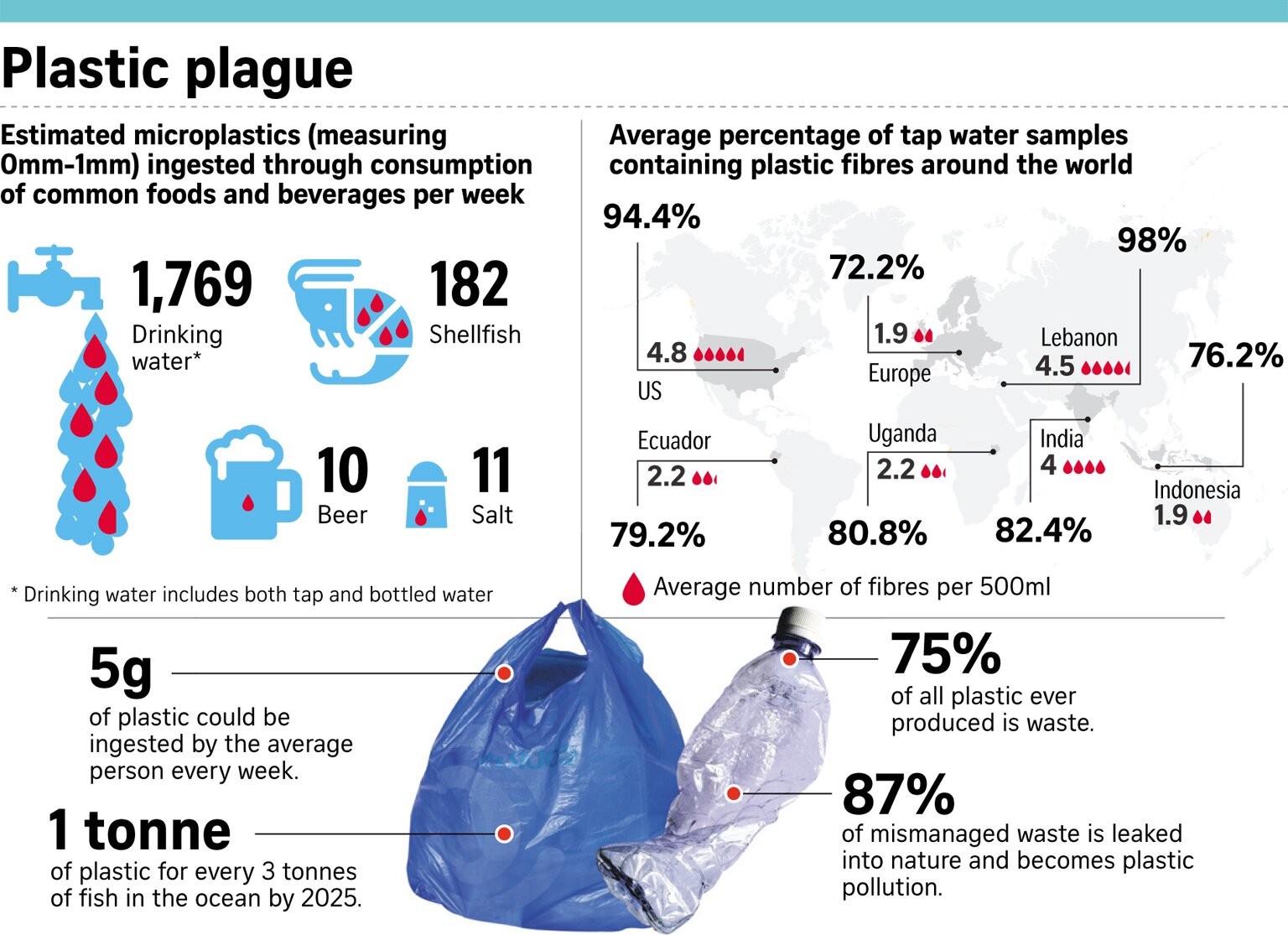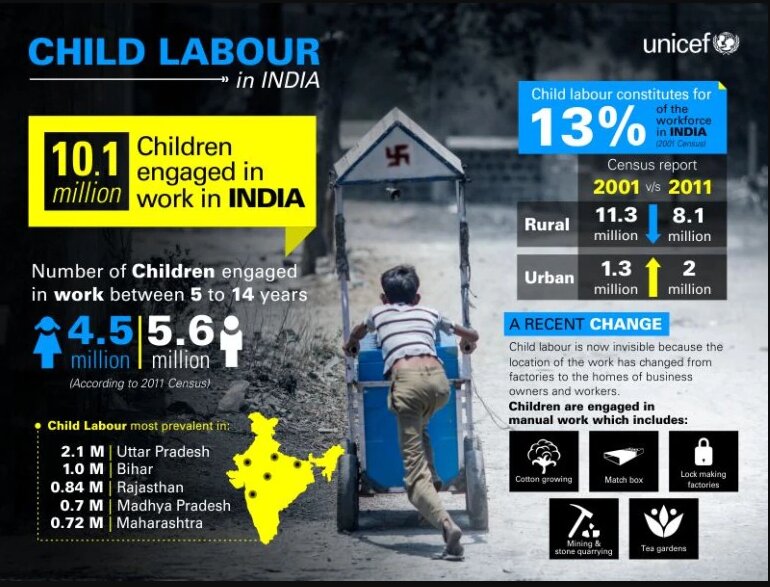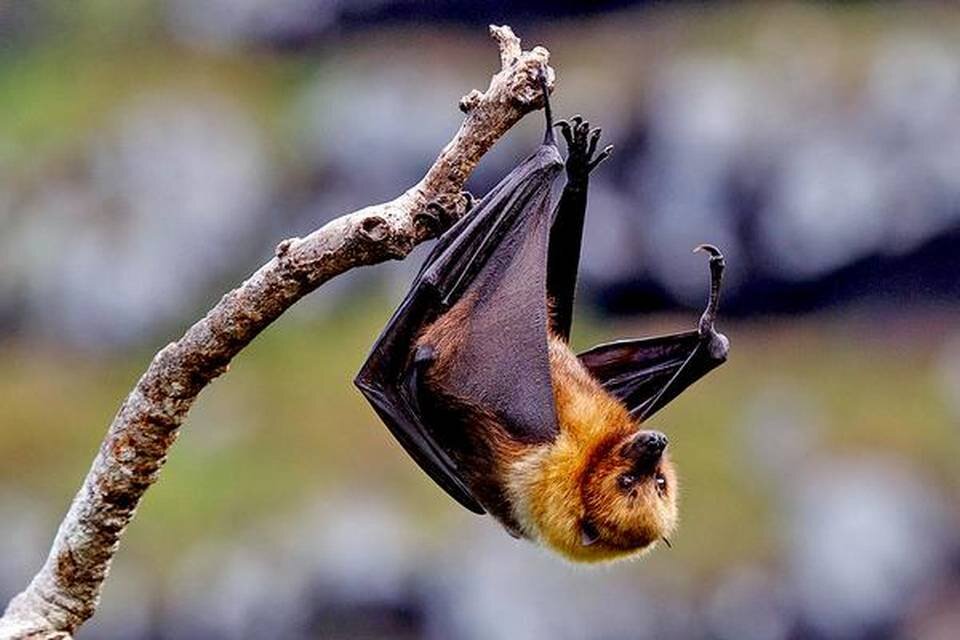Science & Technology
Hypersonic Technology Demonstrator Vehicle
The Defence Research and Development Organisation (DRDO) has conducted maiden test of an indigenously developed Hypersonic Technology Demonstrator Vehicle (HSTDV) along with several other technologies.
- The Hypersonic Technology Demonstrator Vehicle (HTDV) project is an ambitious project of DRDO and is intended to serve multiple military and civil purposes.
- It is an unmanned scramjet demonstration aircraft for hypersonic speed flight, which can cruise at a speed of 6 mach and move up to an altitude of 32.5 kilometres in 20 seconds.
- While it can be used for launching cruise missiles it will also serve the purpose for launching satellites at a low cost.
- Under this project, a hypersonic vehicle is being developed that will be powered by a scram-jet engine.
- This is dual-use technology, which when developed, will have multiple civilian applications. It can be used for launching satellites at low cost.
- It will also be available for long-range cruise missiles of the future. E.g.: Brahmos 2.
- It is being developed by DRDO with assistance from Israel, UK and Russia.
Scramjet Engine Technology Demonstrator
- As of now, satellites are launched into orbit by multi-staged satellite launch vehicles that can be used only once (expendable).
- These launch vehicles carry oxidiser along with the fuel for combustion to produce thrust.
- Nearly 70% of the propellant (fuel-oxidiser combination) carried by today’s launch vehicles consists of oxidiser.
- Launch vehicles designed for one time use are expensive and their efficiency is low because they can carry only 2-4% of their lift-off mass to orbit. Thus, there is a worldwide effort to reduce the launch cost.
- Therefore, the next generation launch vehicles must use a propulsion system which can utilise the atmospheric oxygen during their flight through the atmosphere which will considerably reduce the total propellant required to place a satellite in orbit.
- Ramjet, Scramjet and Dual Mode Ramjet (DMRJ) are the three concepts of air-breathing engines which are being developed by various space agencies.
- A ramjet is a form of air-breathing jet engine that uses the vehicle’s forward motion to compress incoming air for combustion without a rotating compressor.
- Fuel is injected in the combustion chamber where it mixes with the hot compressed air and ignites.
- A ramjet-powered vehicle requires assisted take-off like a rocket assist to accelerate it to a speed where it begins to produce thrust.
- Ramjets work most efficiently at supersonic speeds around Mach 3 (three times the speed of sound) and can operate up to speeds of Mach 6.
- However, the ramjet efficiency starts to drop when the vehicle reaches hypersonic speeds.
- A scramjet engine is an improvement over the ramjet engine as it efficiently operates at hypersonic speeds and allows supersonic combustion. Thus it is known as Supersonic Combustion Ramjet, or Scramjet.
- A dual mode ramjet (DMRJ) is a type of jet engine where a ramjet transforms into scramjet over Mach 4-8 range, which means it can efficiently operate both in subsonic and supersonic combustor modes.
Science & Technology
Moon's Aitken Crater
Scientists have detected an anomaly in the moon's gravitational field because of heavy metal lodged in the mantle deep below the moon's South Pole-Aitken basin (the largest preserved impact crater anywhere in the solar system).
- Possible explanations for this anomaly are:
- The metal from the asteroid that formed this crater is still embedded in the Moon's mantle, rather than sinking to the Moon's core.
- The large mass might be a concentration of dense oxides associated with the last stage of lunar magma ocean solidification.
- This new hypothesis is based on data from NASA's Gravity Recovery and Interior Laboratory (GRAIL) and Lunar Reconnaissance Orbiter missions.
Gravity Recovery and Interior Laboratory (GRAIL)
Gravity Recovery and Interior Laboratory (GRAIL) was a dual-spacecraft mission that involved placing two identical spacecrafts (named “Ebb” and “Flow” to GRAIL-A and GRAIL-B respectively) in orbit around the Moon to use high-quality gravitational field mapping to determine its internal structure.
- The mission was launched in 2011 under NASA’s Discovery Program.
- NASA's Discovery Program began in 1992 to achieve outstanding results by launching smaller missions using fewer resources and shorter development times.
- Its main objective is to enhance our understanding of the solar system by exploring the planets, their moons, and small bodies such as comets and asteroids.
- Ebb and Flow were decommissioned and powered down in anticipation of deliberate impact on the lunar surface Dec. 17, 2012.
Lunar Reconnaissance Orbiter
- The Lunar Reconnaissance Orbiter (LRO) is a NASA moon mission that has been in operation since 2009.
- The mission particularly focuses on the moon's poles to search for water or ice that could exist in permanently shadowed craters.
Indian Economy
UNCTAD World Investment Report 2019
According to the United Nations Conference on Trade and Development (UNCTAD) World Investment Report 2019, India received foreign direct investments worth USD 42 billion in 2018. India attracted over 77% of the total foreign direct investments that came to the South Asian region.
- The global FDI slipped by 13% in 2018, to US$1.3 trillion from $1.5 trillion in 2017, the third consecutive annual decline.

- In South Asia, overall, FDI inflows increased by 3.5% to $54 billion. The prospects for FDI inflows into South Asia are largely determined by expectations of growing investment into India.
- Investment in India rose by 6% to USD 42 billion with strong inflows in manufacturing, communication, financial services and cross-border merger and acquisition activities. However, India’s rank as a source country for FDI fell one notch to the 10th position as it was overtaken by Spain.
- Among others in the South Asian region, FDI flows to Bangladesh and Sri Lanka rose to a record level, to USD 3.6 billion and USD 1.6 billion, respectively, while Pakistan witnessed a 27% decline in investment to USD 2.4 billion.
- Of the 5,400 special economic zones (SEZs) in the world, more than 4,000 are in developing countries in Asia. In the developing countries in Asia, China topped the list at 2,543 such zones, followed by Philippines (528), India (373) Turkey (102), Thailand (74) among others.
- India has recently liberalised its rules on inward investment (an investment that comes into a country from investors who live in other countries) in several industries, including single-brand retail trading, airlines and power exchanges.
UNCTAD
- UNCTAD is a permanent intergovernmental body established by the United Nations General Assembly in 1964. Its headquarters are located in Geneva, Switzerland.
- It is part of the UN Secretariat.
- It supports developing countries to access the benefits of a globalized economy more fairly and effectively.
Biodiversity & Environment
People's Ingestion Of Plastic
The World Wide Fund for Nature’s (WWF) study has revealed that people worldwide could be ingesting five grams of microscopic plastic particles every week, which is equivalent to the weight of a credit card.
- Microplastics are plastic particles measuring 5mm in size or smaller.
Findings
- Sources of plastic ingestion:
- Drinking water: is one of the largest sources of plastic ingestion(with plastic particles found in bottled, tap, surface and groundwater).
- Shellfish: account for as much as 0.5g a week.
- Inhalation represented a negligible proportion of microplastics entering the human body.
- Indoor air because of its limited circulation is more heavily polluted with plastic than the outdoors.
- Major sources of Indoor airborne microplastics are synthetic textiles and household dust.
Burden of Plastic
- In the last two decades, the world has produced as much plastic as during the rest of history, and the industry is set to grow by 4% a year until 2025.
- Ocean will contain one metric tonne of plastic for every three metric tonnes of fish by 2025.
- About one-third of waste plastics are dumped or leaches into nature, polluting land, rivers and the sea.
Plastic pollution and Wildlife
- Animals get entangled in large plastic debris, leading to injury or death.
- Animals also ingest large quantities of plastic that they cannot pass through their digestive systems, resulting in internal abrasion, digestive blockage, and death.
- Toxins from ingested plastic also harm breeding and impair the immune system of animals.
Curbing Plastic Pollution
- Political and economic actions to reduce the amount of plastic being disposed of into the environment.
- Minimize the use of plastics and encourage recycling of plastics instead of taking stringent acts of total ban or zero plastic.
- Legally binding agreement to combat marine plastic pollution - it should be a stand-alone treaty like the Montreal Protocol or the Paris Agreement.
- Binding national commitments and protocols for restricting commercial and household use of plastics.
Science & Technology
Chandrayaan-2 Mission
For the first time in the history of Indian Space Research Organisation (ISRO), two women will head the Chandrayaan-2 mission.
- Ritu Kridhal and M Vanitha are leading as project and mission directors respectively for Chandrayaan-2 mission.
Chandrayaan-2 Mission
Chandrayaan-2 is India's second lunar exploration mission after Chandrayaan-1, developed by the Indian Space Research Organisation.
Objectives
- Quantify the water available on the moon’s surface.
- Map its topography, to explore chemicals and minerals such as magnesium, iron, and Helium.
- Study topmost part of the lunar atmosphere.
Significance
- Global Power: If successful, India will be the fourth country (After Russia, China, and the USA) to land a rover on the moon.
- India will be the first country to land on the southern pole of the moon.
- This would give ISRO opportunity to name that site on the moon.
- Indigenous mission: 13 instruments from India, one instrument from US space agency, NASA.
- Future Space Exploration: mission will also expand the country’s footprint in space as moon is the perfect test-bed for proving technologies required for future space exploration.
Complexities involved in a moon landing
- Trajectory accuracy: Ensuring trajectory accuracy while navigating 3.844 lakh km has its own challenges.
- Communication hurdle: Owing to the large distance from Earth, radio signals, which need to be picked up, would be weak.
- Lunar dust: Firing engines close to the lunar surface results in the backward flow of gases and dust, causing hindrance to deployment mechanism and damaging sensors.
- Extreme temperatures: A lunar day or night lasts 14 earth days, resulting in extreme surface temperature.
- Trans-lunar injection, capture: Series of engine burns to get close to the moon, intersection of probe and moon must be predicted in advance with accuracy.
- Orbiting: The lumpy lunar gravity influences the orbit of the spacecraft.
Governance
The Anti Hijacking Act, 2016
A special court in Ahmedabad has sentenced a man to life and fined him Rs 5 crore for creating a hijack scare aboard a Jet Airways Mumbai-Delhi flight and forcing it to land in Ahmedabad in October 2017. This is the first conviction under the Anti Hijacking Act, 2016.
The Anti Hijacking Act, 2016
- It replaced the Anti Hijacking Act, 1982.
- It aims to enforce the Hague Hijacking Convention and the 2010 Beijing Protocol Supplementary to the Convention.
- The Hague Convention (Convention for the Suppression of Unlawful Seizure of Aircraft) sets out the principle of aut dedere aut judicare — a state that is a party to the Convention must prosecute an aircraft hijacker if no other state requests his or her extradition for prosecution.
- The 2010 Protocol Supplementary, which made amendments and additions, came into effect on 1st January, 2018, and had 27 signatories as of September, 2018.
- The new Act applies even if the offence is committed outside India but the aircraft is registered in India or leased to Indians, or the offender is Indian, or the offender is stateless but lives in India (such as an illegal Bangladeshi migrant), or the offence is committed against Indians.
- The key new introductions are the death penalty, life sentence for hoax calls, and a wider definition for aircraft “in service”.
- Under the old Act, an aircraft was considered “in service” between the time the doors shut and the time every passenger had disembarked.
- Under the new Act, “an aircraft shall be considered to be ‘in service’ from the beginning of the pre-flight preparation of the aircraft by ground personnel or by the crew for a specific flight until twenty-four hours after any landing”.
The Offence of Hijacking
- Section 3(1) of the Anti Hijacking Act, 2016 defines the offence of hijacking as: “Whoever unlawfully and intentionally seizes or exercises control of an aircraft in service by force or threat thereof, or by coercion, or by any other form of intimidation, or by any technological means, commits the offence of hijacking”.
- The act aims to punish not only an actual act of hijacking, but even a false threat that may appear genuine.
- It takes into account that armed possession of an aircraft may not be necessary for hijacking and that it may be hijacked remotely through a technological threat.
- Hijacking attempts, directing others to commit hijacking, being an accomplice and assisting another person to evade investigation are punishable as hijacking and so is the preparation for hijacking.
- Punishment: If hijacking leads to death of a passenger or a crew member, it is punishable with death. If not, the hijacking is punishable with life imprisonment.
Social Justice
World Day Against Child Labour
A 'Baal Panchayat' (Children's Parliament) was organised in the Delhi by Kailash Satyarthi’s Children's Foundation on the occasion of World Day against Child Labour.
- Children presented a charter of demands in the children's parliament which they wished to convey to the government of India.
- According to the Census 2011, most child labours in India are employed for agriculture and allied activities. This is in sync with the global trend which shows that 71 per cent of child labour is concentrated in this sector.
World Day Against Child Labour
- Every year 12th June is celebrated as the World Day Against Child Labour. The International Labour Organization (ILO) launched the World Day Against Child Labour in 2002 to focus attention on the global extent of child labour and the action and efforts needed to eliminate it.
- The theme of 2019: Children shouldn’t work in fields but on dreams.
- The Sustainable Development Goals (SDGs), adopted by world leaders in 2015, include a renewed global commitment to ending child labour.
- Target 8.7 of the SDG calls on the global community to take immediate and effective measures to eradicate forced labour and end modern slavery.
ILO Convention on Child Labour
- India has ratified six out of the eight core/fundamental International Labour Organisation (ILO) Conventions.
- The Forced Labour Convention, 1930 (No. 29)
- Abolition of Forced Labour Convention, 1957 (No. 105)
- Equal Remuneration Convention, 1951 (No. 100)
- Discrimination (Employment and Occupation) Convention, 1958 (No. 111)
- Minimum Age Convention, 1973 (No. 138)
- Worst Forms of Child Labour Convention, 1999 (No. 182).
- India has not ratified the core/fundamental Conventions, namely Freedom of Association and Protection of the Right to Organise Convention, 1948 (No. 87) and Right to Organise and Collective Bargaining Convention, 1949 (No. 98).
Social Justice
Nipah virus and Fruit Bat
Fruit bats have been identified as carriers of the deadly Nipah virus in Kerala.
About Fruit Bat
- Fruit bats, as opposed to insectivorous bats, survive largely on a diet of fruit, which they locate with their sense of smell (insectivorous bats locate their prey through echolocation, i.e locating the source of the echoes of their own sound).
- Fruit bats belong to the Pteropodidae family; those in the Pteropus genus within this family are natural hosts for the Nipah virus.
- Fruit bats are widely found in South and Southeast Asia and are also known as flying foxes.
Nipah virus and Fruit bat connection
- The virus survives in the bat’s body without causing disease, allowing it to jump to susceptible mammals like humans or pigs when bats come in contact with them.
- The National Institute of Virology had found that the virus was first transmitted from fruit bats identified as Pteropus spp.
- In Bangladeshi outbreaks, researchers found antibodies to Nipah in the Indian flying fox.
Significance
- Identifying the source of the Nipah infection will help prevent future spread, as Nipah virus has a spillover effect i.e virus seems to have moved from bats to humans in one event and after this moved from one human to another.
Why are so many diseases linked to bats?
- All bats can carry viruses, some of them deadly like:
- Severe Acute Respiratory Syndrome (SARS) antibodies were found in insectivorous bats.
- Ebola antibodies were found in Hammer-headed fruit bat.
- Indian Flying Fox, hosts over 50 viruses
- With around 1,200 species, bats comprise 20% of the earth’s mammalian diversity.
- Long periods of flying raises the temperatures of bats, boosting their immune responses and helps them survive the microbes’ pathogenic effects.
International Relations
Global Peace Index 2019
India's is ranked 141 among 163 countries on the Global Peace Index 2019. The ranking of India in 2018 was the 136th.
Global Peace Index(GPI)
- The GPI was founded by Steve Killelea, an Australian technology entrepreneur and philanthropist.
- It is released by Australian think tank Institute for Economics & Peace.
- It ranks countries according to their level of peacefulness based on three thematic domains:
- The level of societal safety and security.
- The extent of ongoing domestic and international conflict.
- The degree of militarisation.
- Possible effects of climate change on peace is newly included in this research.
- In the last five year, the global score of GPI has improved, with 86 countries improving and 76 recording deteriorations.
Findings of the Report
- Most peaceful: Iceland remains the most peaceful country in the world, a position it has held since 2008.
Other countries at top of the Global Peace Index (GPI) are New Zealand, Austria, Portugal, and Denmark. - Least peaceful: Afghanistan is now the least peaceful country in the world, replacing Syria, which is now the second least peaceful.
South Sudan, Yemen, and Iraq comprise the remaining five least peaceful countries - Position of South Asian countries: Bhutan topped the index with 15th rank, Sri Lanka 72, Nepal 76, Bangladesh 101 and Pakistan 153rd on the index.
- Climate hazards: India together with the Philippines, Japan, Bangladesh, Myanmar, China, Indonesia, Vietnam and Pakistan are the nine countries with the highest risk of multiple climate hazards.
- India has the 7th highest overall natural hazard score.
- Military expenditure: US, China, Saudi Arabia, Russia and India are the top five countries with the largest total military expenditure.
Important Facts For Prelims
Pro-tem Speaker
- Virendra Kumar, seven-time MP from Tikamgarh in Madhya Pradesh, has been chosen as the pro-tem speaker of the 17th Lok Sabha.
- Pro-tem is a Latin phrase which means “for the time being”. The Pro tem Speaker is a temporary speaker appointed for a limited period of time.
- The need of pro-tem speaker: The speaker of the Lok Sabha/legislative assembly vacates the office immediately before the first meeting of the newly elected house.
- President/governor appoints the pro-tem speaker to preside over the sittings of the newly elected house. Usually, the senior most member of the house is made the pro-tem speaker.
- Duties of pro tem speaker:
- The Pro-tem Speaker presides over the first sitting of the Lok Sabha, administers the oath of office to the newly elected MPs.
- To conduct the vote for the speaker and deputy speaker.
- On the election of new Speaker, the office of the pro tem speaker ceases to exist.
- He also administers the floor test.
Important Facts For Prelims
54th Jnanpith Award
Author Amitav Ghosh has been felicitated with the 2018’s Jnanpith Award for his outstanding contribution to the enrichment of Indian Literature in English.
- The author is the first English language writer to become a Jnanpith laureate.
- He was also awarded the Sahitya Akademi Award in 1990 for his book ‘The Shadow Lines’ and the Padma Shri in 2007 for his services to literature and education.
- The Jnanpith award is the highest literary award in India and can only be conferred upon an Indian citizen. English language was added to the list of languages for consideration after the 49th Jnanpith Award.
- The recipients of the award are given a cash prize of Rs 11 lakh, a citation plaque and a bronze replica of Goddess Saraswati.
- In 1965, famous Malayalam writer G Sankara Kurup became the first winner of the Jnanpith Award.




